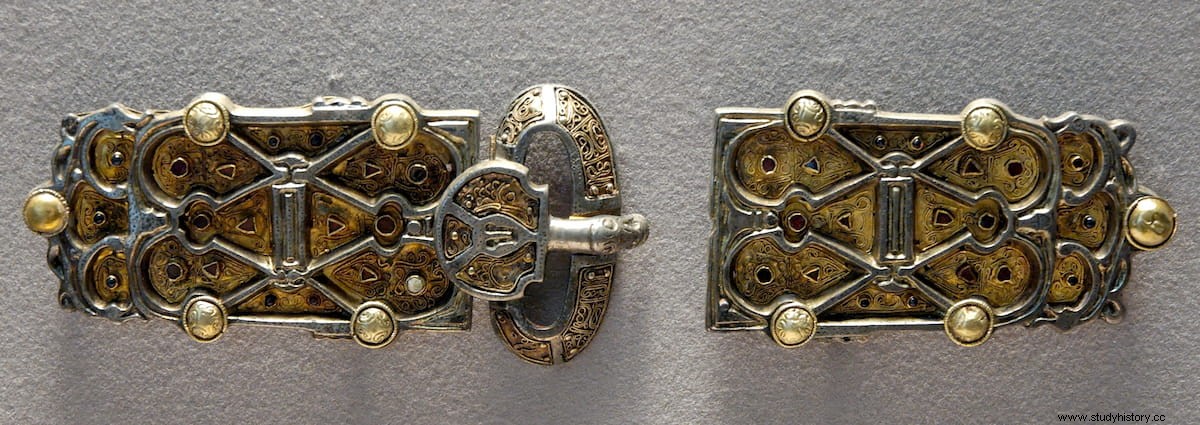In 1959, numerous medieval sarcophagi were discovered in the Basilica of Saint-Denis in Paris, the burial place for centuries of the kings of France.
The person in charge of the Parisian archaeological work was, at that time, Michel Fleury, one of the most outstanding French specialists. Upon opening one of the sarcophagi, he noticed something unusual, which made its contents truly special.
Inside, along with the usual remains of bone, tissue, and jewelry, was something else, what appeared to be a mummified organ. Sure enough, it was a lung, which had been preserved in a way that researchers couldn't explain at the time.
The character buried there could be identified thanks to the dress and the jewels that accompanied him. Specifically, one of the rings contained the inscription Arnegundis surrounding the central monogram Regine . She was queen Arnegonda, wife of the Merovingian king Clotaire I, who lived between approximately 515 and 573.
Clotaire had several wives at the same time, so Arnegonda shared it, among others, with her own sister, Ingonda, who had previously married the king.
She likewise she will be the mother of Chilperic I, who at the death of his father became King of Neustria. However, Arnegonda was not of Merovingian blood descent, which made the 2006 DNA analysis by Josh Bernstein useless to check if she had oriental characteristics. , in line with the stir caused by the book The Da Vinci Code by Dan Brown, in which it is stated that the Merovingians descended from Jesus. She was a German princess from Thuringia, daughter of King Baderic.
The Thuringians had invaded Gaul together with the Huns, with whom they had allied themselves, creating a kingdom of their own. They would be defeated precisely by Clotaire I in the year 531 and his kingdom incorporated by the Merovingians into that of the Franks. More or less on that same date, Arnegonda's marriage to Clotario would take place.
The analyzes of her remains showed that she had some type of physical disability, and may have suffered from poliomyelitis when she was very young, which would support the legend that Clotario took her as his wife at the request of his sister Ingonda, since otherwise she would not have found a husband. .
The mystery of her mummified lung has sparked different theories over the last few decades. Had she been mummified naturally or had she been embalmed on purpose? 
A team of researchers led by bio-anthropologist Raffaella Bianucci, from the University of Turin, came up with the solution in 2016, in which a copper belt found along with the remains plays an important role.
The analyzes revealed unusual concentrations of copper ions on the surface of the lung tissue, and of copper oxide as well as small amounts of benzoic acid (now used in canned products) and similar compounds inside the organ.
These substances are of natural origin and very similar to those found in some Egyptian mummies. Which, according to the researchers, reaffirms the theory that Arnegonda was subjected to an oral injection of fluids with components of aromatic plants or spices.
Since Arnegonda wore the mentioned belt around her waist, the copper oxide found in her lungs would have come from it. And the preserving properties of copper coupled with the spice treatment would have allowed the mummification of the lung, since it was there that the liquid accumulated. That is why it is the only organ that was preserved.
It is known that the Merovingians embalmed their monarchs following a procedure that they had learned from the Romans, who in turn had obtained it from the Egyptians. According to Bianucci, it is clear that Merovingian mummification was a much less sophisticated process, based mainly on the use of oils, spices and aromatic plants such as thyme, myrrh or aloe.
Queen Arnegonda is like that, one of the few medieval characters for whom we have historical documentation through sources, physical remains and objects.
